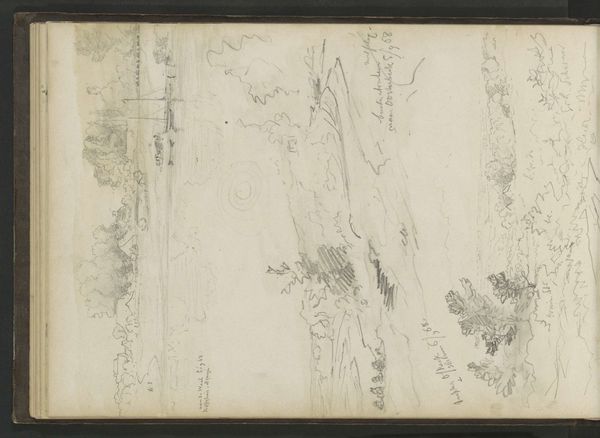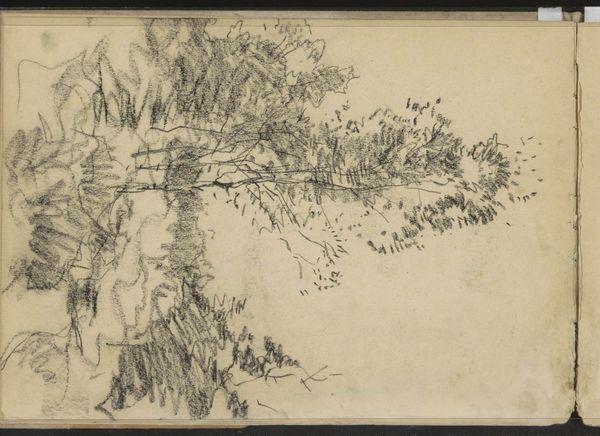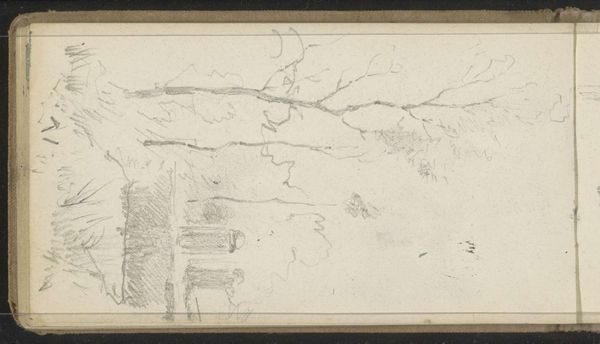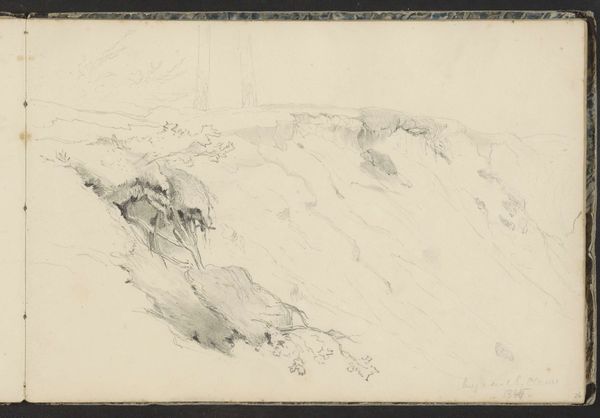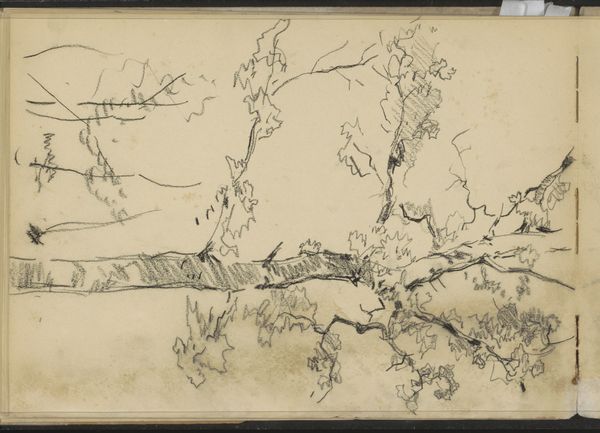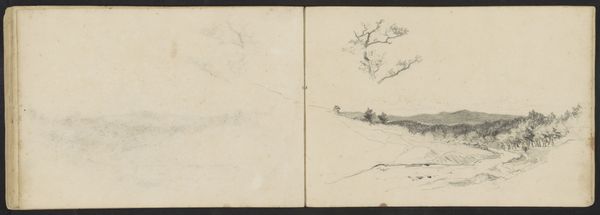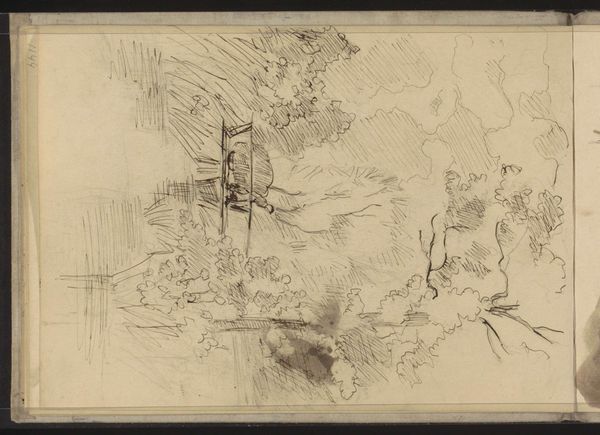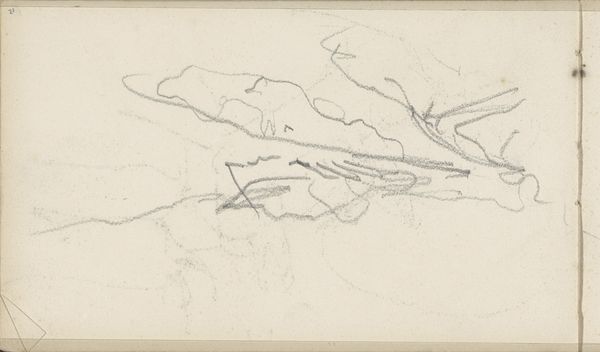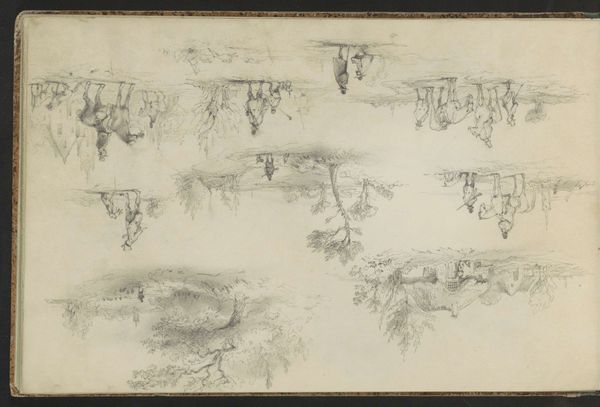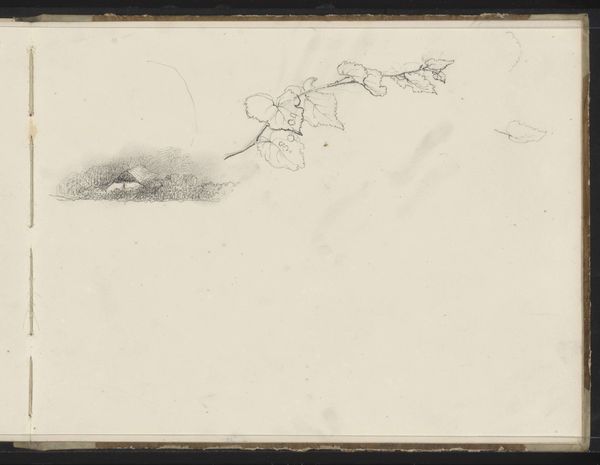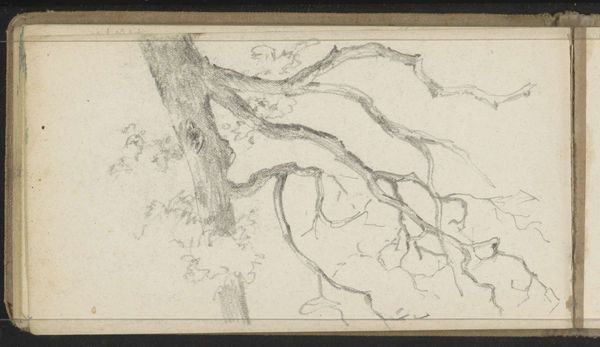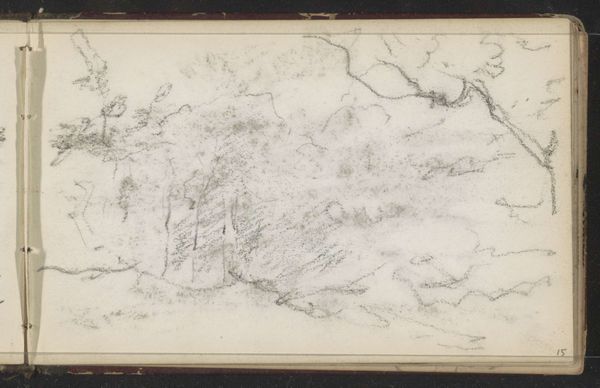
Copyright: Rijks Museum: Open Domain
Editor: So, here we have "Boom," a drawing by Johannes Tavenraat from 1858, rendered in ink on paper. It's a striking landscape study, very delicate. It gives the impression of stillness, maybe even a kind of melancholic solitude. What's your take on it? Curator: The image speaks volumes about our relationship with nature, particularly in the Romantic era. Tavenraat's choice of a fallen tree as his subject can be seen as a metaphor for the transience of life and the inevitable decay that affects all living things. Do you see any possible connections to broader societal anxieties in mid-19th century Europe? Editor: Anxieties? I guess you could read it as reflecting concerns about industrialization disrupting the natural world, with the fallen tree representing nature’s vulnerability? Curator: Precisely! The industrial revolution was reshaping the landscape and society itself, creating a sense of displacement for some. Also, consider the political turmoil of 1848; does the fallen tree evoke ideas about shattered social structures and hierarchies? Editor: It’s a pretty somber drawing, I didn't expect it to have such historical significance! I can totally see it in relation to those political shifts, that’s actually pretty cool. Curator: Art often acts as a mirror, reflecting the hopes, fears, and realities of its time. Editor: That’s true. I see so much more than just a landscape now. Thanks! Curator: My pleasure. Looking at art with this perspective, makes it relevant today.
Comments
No comments
Be the first to comment and join the conversation on the ultimate creative platform.
